All Saints Church
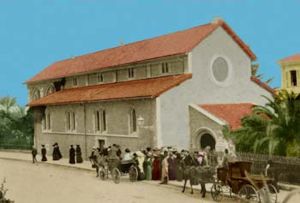
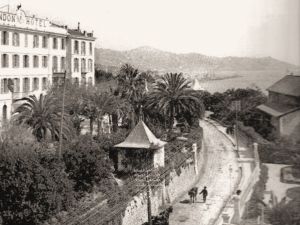 The sacred building, originally called All Saints Church, was erected in the current Corso Matuzia in front of the Hotel Londra, by Giovenale Gastaldi senior from April 1883, based on the design of the English architect R. Norman Shaw, who had already designed important works in London, such as the headquarters of the Royal Geographical Society, the Gaiety Theatre and the Piccadilly Hotel.
The sacred building, originally called All Saints Church, was erected in the current Corso Matuzia in front of the Hotel Londra, by Giovenale Gastaldi senior from April 1883, based on the design of the English architect R. Norman Shaw, who had already designed important works in London, such as the headquarters of the Royal Geographical Society, the Gaiety Theatre and the Piccadilly Hotel.
The construction of the church, destined for the large local British community of Anglican faith, was made possible thanks above all to the proceeds of a private subscription organised by Messrs Garnett and Congreve. 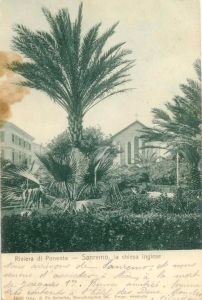
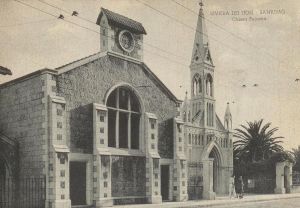 The new church, solemnly dedicated on 11 February 1884, looks like a building in classic Victorian neo-Gothic style and preserves significant works of art inside, such as the triptych in oak wood, above the high altar, formed by a central panel and two side doors, made in 1910 by the Flemish sculptors H. and A. Wespelaere of Bruges; the panels of the Way of the Cross, consisting of the sketches of the large bronze statues of the monumental Way of the Cross located in the park of Boscobello, an elegant organ, the large rose window and the artistic stained glass windows.
The new church, solemnly dedicated on 11 February 1884, looks like a building in classic Victorian neo-Gothic style and preserves significant works of art inside, such as the triptych in oak wood, above the high altar, formed by a central panel and two side doors, made in 1910 by the Flemish sculptors H. and A. Wespelaere of Bruges; the panels of the Way of the Cross, consisting of the sketches of the large bronze statues of the monumental Way of the Cross located in the park of Boscobello, an elegant organ, the large rose window and the artistic stained glass windows.
A series of marble tombstones and brass plaques commemorate the numerous benefactors of the Anglican community in Matuzzo, including the superintendent of the Royal Botanic Garden in Calcutta George King and various members of the Hanbury family, who lived in the nearby Villa della Mortola. In 1924 the atrium of the church was built, today's "Clock Room", which in the early days was referred to simply as Cotes Hall, named after the benefactress of the same name who had made it and then kindly donated it to the Anglican community. 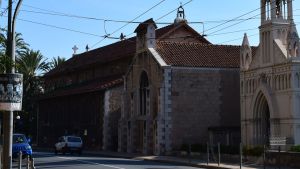 The church, in a perfect state of conservation and recently bound by the Ministry of Cultural Heritage for its considerable historical and artistic value, has been acquired a few years ago by the Catholic congregation Famiglia dell'Ave Maria, which renamed it Church of All Saints and has a Mass celebrated there on public holidays, while another sacred service is reserved on Sundays for the Anglican faithful.
The church, in a perfect state of conservation and recently bound by the Ministry of Cultural Heritage for its considerable historical and artistic value, has been acquired a few years ago by the Catholic congregation Famiglia dell'Ave Maria, which renamed it Church of All Saints and has a Mass celebrated there on public holidays, while another sacred service is reserved on Sundays for the Anglican faithful.
(sources: text A. Gandolfo; images from private archive)




